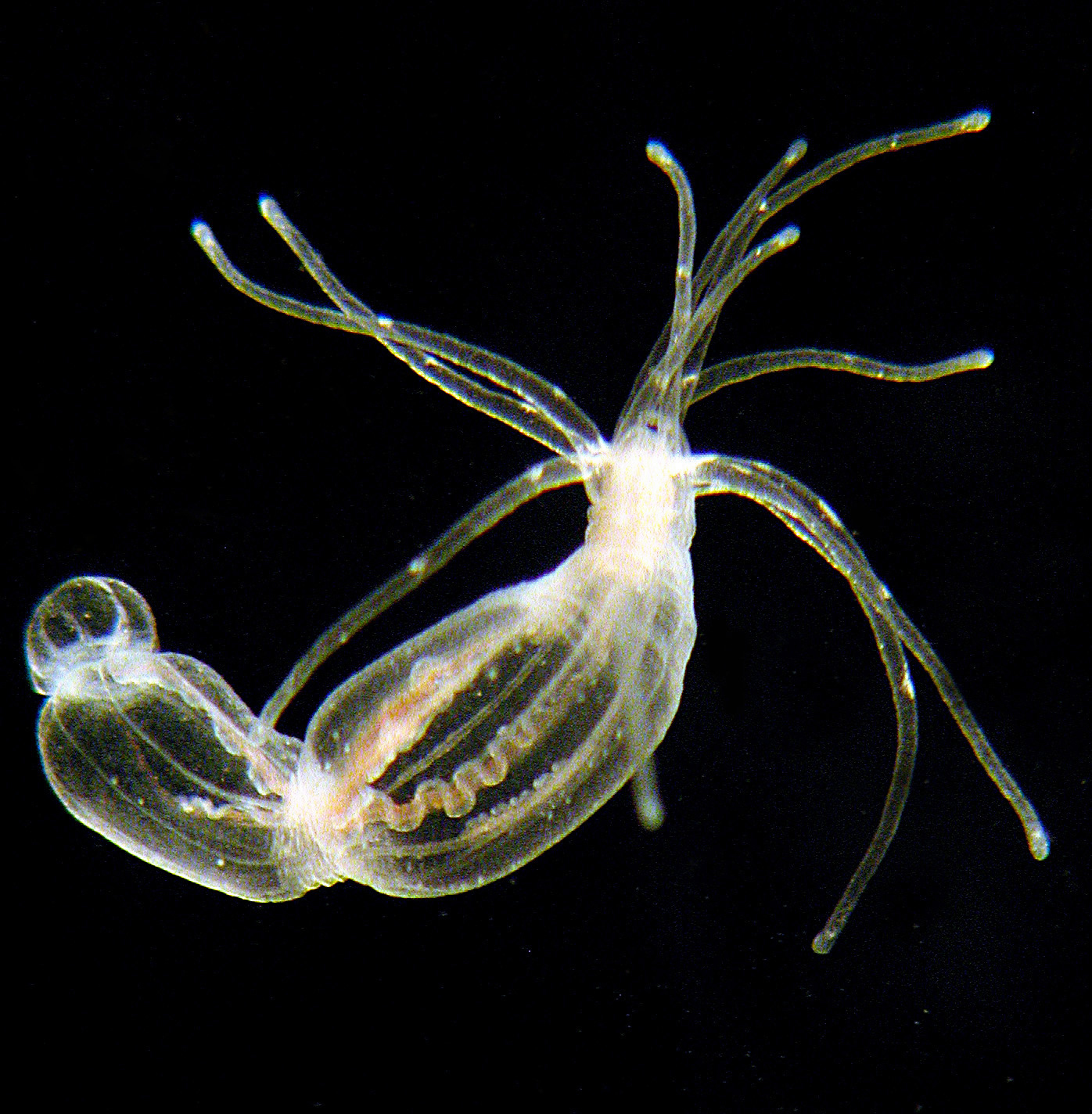 Despite their relatively simple appearance, cnidarians are extremely diverse with respect to morphology, development, ecology, and life histories. My work in the Finnerty lab utilizes the natural diversity found between cnidarian taxa to investigate the evolution of developmental mechanisms underlying these diverse life history trajectories. Research on development and life history evolution in cnidarians bears direct relevance to our understanding of several significant concepts in biology, including the evolution of parasitism, regeneration, asexual reproduction, and coloniality. The primary models for my studies are two sea anemones from the family Edwardsiidae: Nematostella vectensis and Edwardsiella lineata.
Despite their relatively simple appearance, cnidarians are extremely diverse with respect to morphology, development, ecology, and life histories. My work in the Finnerty lab utilizes the natural diversity found between cnidarian taxa to investigate the evolution of developmental mechanisms underlying these diverse life history trajectories. Research on development and life history evolution in cnidarians bears direct relevance to our understanding of several significant concepts in biology, including the evolution of parasitism, regeneration, asexual reproduction, and coloniality. The primary models for my studies are two sea anemones from the family Edwardsiidae: Nematostella vectensis and Edwardsiella lineata.
Evolution of parasitism
The majority of animals on earth are parasitic, most of whom presumably evolved from free-living ancestors. However, the mechanisms underlying the developmental shift from a free-living to parasitic life history are not nearly as well understood as those for other developmental events, such as embryogenesis. Edwardsiella lineata has a derived parasitic life history in which its larvae parasitize the ctenophore, Mnemiopsis leidyi. The E. lineata life cycle preserves ancestral portions of the edwardsiid life cycle (e.g., planula->polyp), while interposing novel developmental trajectories (planula->parasite; parasite->planula). One of my goals is to understand how the radical changes in body plan associated with the evolution of the parasite life stage may be facilitated by alterations in existing gene regulatory networks.
Regeneration
Regeneration has been studied for over 250 years, and yet, despite it’s obvious relevance to human health and disease, our understanding of this phenomenon lags behind that of other developmental processes. I am interested in the molecular mechanisms governing axial patterning and tissue fate during regeneration. Nematostella is well suited for regenerative studies, given its simple body plan, high capacity for regeneration, and rapid regeneration time. In 2010 I was awarded a three year NIH predoctoral fellowship from NIGMS to study the role of Wnt/ß-catenin signaling during regeneration in Nematostella. Under this fellowship, I am exploring two primary avenues of research: (1) to characterize the morphological and gene expression changes that take place during regeneration, and (2) to elucidate the role of Wnt/ß-catenin signaling on gene regulatory networks governing axial patterning and tissue fate during regeneration.
Asexual Reproduction
Cnidarians display a remarkable diversity of life cycles, many of which include one or more forms of asexual reproduction. In fact, asexual modes of development are significant components of the life history for cnidarians in many fundamentally important ways. Examples include the clonal growth of corals, whose aggregate life cycles over millennia supports the oceans’ most species-rich ecosystem, the coral reef; and the metamorphosis from polyp to medusa for jellyfish, whose capacity for rapid population growth can have profound impacts on pelagic food webs. Given the sensitivity of corals and jellyfish to climate changes, understanding their growth and development is of increasing concern. I am currently studying how multiple modes of asexual reproduction in the sea anemone, Nematostella vectensis, are coordinated to give rise to a standard adult body plan. This work has been supported by a Lerner-Gray grant from the American Museum of Natural History, and a Warren-McLeod Fellowship from Boston University. More broadly, I am interested in understanding how modes of asexual reproduction are coordinated at multiple phylogenetic scales: (1) throughout the life history of individual species that employ more than one mode, (2) between different classes of cnidarians that employ different modes to achieve similar developmental fates, and (3) between distantly related taxa that utilize distinct modes of asexual reproduction to achieve disparate developmental fates.